As Seen In: Style at Home Magazine
1-2-3 gorgeous! This terrific trio (Wilder chair, Marble Coral bowl, and Sagamore accent table) recently appeared in Style at Home magazine.

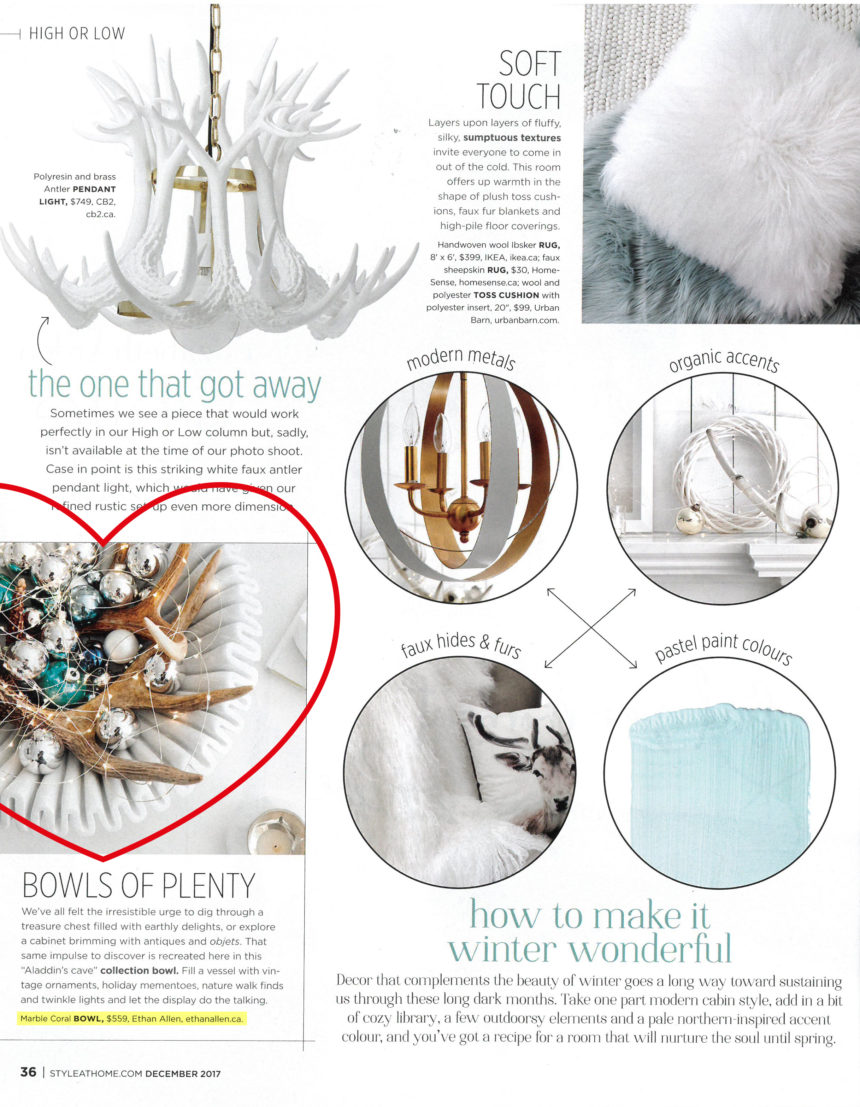

1-2-3 gorgeous! This terrific trio (Wilder chair, Marble Coral bowl, and Sagamore accent table) recently appeared in Style at Home magazine.



It’s nearly New Year’s Day, which means it’s resolution time! We asked some of our team members here to share their “home goals” for the new year. Some are big picture game-changers. Some are small steps that can make you feel good all day. We hope they inspire you to make some of your own!
SHAWN LANG, Consultant/Lifestyle Blogger: “My New Year Resolution this year is pretty simple but important: I vow to make my bed every morning. And not just throwing the blanket over with the sheets all crinkled up underneath. I’m actually going to make my bed just as I do when guests come over: Perfectly. The way I see it, it’s the first accomplishment of the day! Getting it done will give me the motivation to accomplish other projects throughout the day. And nothing beats coming home to a freshly made bed where you can relax with a good book.”
MISSY GRASSO, Senior Designer: “My place is a tiny apartment on a working farm. I love it. It keeps me in balance, which is really important if you work three jobs, like I do! When I moved here three years ago, I didn’t take the time to reorganize my life, and it’s about time I did. So, I resolve to get organized, especially with my finances, to get a laptop (my phone’s just not cutting it), and despite lack of space, to find a filing solution. I’m looking forward to feeling like things are under control and living happily in my tranquil haven!”
MARIA LAPIANA, Copywriter: “Like a lot of people, my New Year Resolution is to clear the clutter; specifically, the clutter on my dining room table. Most of the time it’s piled high with mail and miscellany. It’s also a way station for pretty much everything that’s on its way into or out of the house. The mess is controlled chaos, but it still drives me nuts. So in 2018, I’m going to give it a clean sweep. Or a sweep. At least a dusting… Well, I’ll do my best. After all, how hard can it be to move everything to the kitchen counter?”
LAURA CHAPMAN, Senior Director of Design: “I may finally alphabetize my spice rack, but it’s not certain. I like the thrill of the hunt when seasoning my food, and it makes my mom and mother-in-law crazy when they visit, so the chaos may be worth keeping!”
KAREN PEASE-MARINO, Senior Art Director: “We recently downsized, so my resolutions involve two spaces in our new home. The first: to make a collage of art, mirrors, and found objects on our blank dining room wall; I have all the pieces – now it’s time to get them up there. The second: to set up my studio. I’m planning to write a children’s book about extreme poverty in Africa, and my goal is to have it finished by June. I don’t need much – just a place for my computer, a table to work on my collages, and an “inspiration wall” for swipe, African fabric swatches, beads, quotes, and any other forms of inspiration that get my creative juices flowing.”
ILENE DORENBOSCH, Design Manager: “A good friend breeds golden retrievers, and as of Christmas, we have a new addition to our family! Our new little girl joins Cassie, our beloved 12½-year-old Golden – it’s been a long time since we’ve had a puppy in the house. Our dog-driven New Year Resolutions are to give Cassie as much attention as the puppy, to make sure we don’t leave socks and anything that can be eaten within puppy reach, and to not argue about who will get up in the middle of the night to take the puppy out in the winter cold. We’re so excited for the sound of little paws running through the house again!”
We at The Daily Muse wish you a safe, happy, and prosperous new year.
Display cabinets offer a creative and sophisticated way to showcase your style and interests, and they add lots of personality to your home. Go beyond traditional curio cabinets or glass door styles and choose open display cabinets; they offer an updated, casual feel that complements many of today’s lifestyles.
Here are a few ways to put your best style on display, right out in the open.
COLLECT YOURSELF
Mix and match your favorite curiosities or unique accents to create a curated look. Treat each shelf as a little vignette, combining artful pieces, books, and other decorative objects you love. Be sure to create a focal point in each space, playing with various heights and coordinating colors for balance. Love the well-traveled look? So do we! Decorate your display cabinet with treasures you’ve collected from your travels and globally inspired accents from our latest look, Passport .

Our Ming display cabinet, decorated with hand-sculpted vases and accents inspired by faraway places, becomes the perfect setting for an intriguing showcase.
GET ECLECTIC
Incorporate a variety of pieces into your collection, but choose a common theme for your cabinet, such as color, subject, type of piece, or material—this helps you avoid a cluttered look. Hand-painted porcelain jars and vases or ceramic platters make stunning choices. If your style leans more on the contemporary side, display one distinct piece per shelf to create a striking art gallery effect.

This themed display of dinnerware and entertaining pieces in our Christopher china and buffet cabinet makes a perfect complement to everyday dining style.
DO IT BY THE BOOK
If you have a ton of books lying around or in boxes, pick your favorites and display them for all to admire. Coffee table books are the best choices to create this look, and they make great conversation pieces! When arranging your books, play with proportion. Stack them vertically or horizontally, or organize them by color to create a curated look.

Unique artwork and dazzling silver accents add visual interest and dimension to stacks of books.
Whatever your style, opt for pieces that speak to you and you won’t go wrong. If you’re not sure where to start, just talk with one of our design pros. They can help you find pieces to complement your personal treasures or build your collection entirely from scratch, and their help is always on the house.
When it comes to seasonal décor, ribbon is one of the most versatile materials there is. Everyone knows ribbon can transform a gift—even one wrapped in plain brown paper—with a simple twist, knot, or bow. Ribbon can give a tired wreath a festive twirl in seconds. It can dress your dining chairs for dinner. And it can stand in for garland, then top a tree with sparkling finesse. We love ribbon of every stripe, whether wide, wired, plaid, pinked, grosgrain, or velvet.
We unspooled some holiday classics (a pair of tartans and razzle-dazzle reds) to jazz up a couple of our favorite everyday accents. With a snip here, and a snip there, we used ribbon to create holiday statement pieces—and you can, too. Let’s get rolling!


Wrap candleholders with lovely tartan ribbon to give your tabletop or mantel a quick holiday update. We used our simple glass hurricanes, available in three sizes. Cut lengths of ribbon two inches longer than the circumference of the hurricanes. Wrap ribbon around each hurricane, folding over the extra. Secure with double-sided tape. Layer narrow ribbon over wide for added cheer!
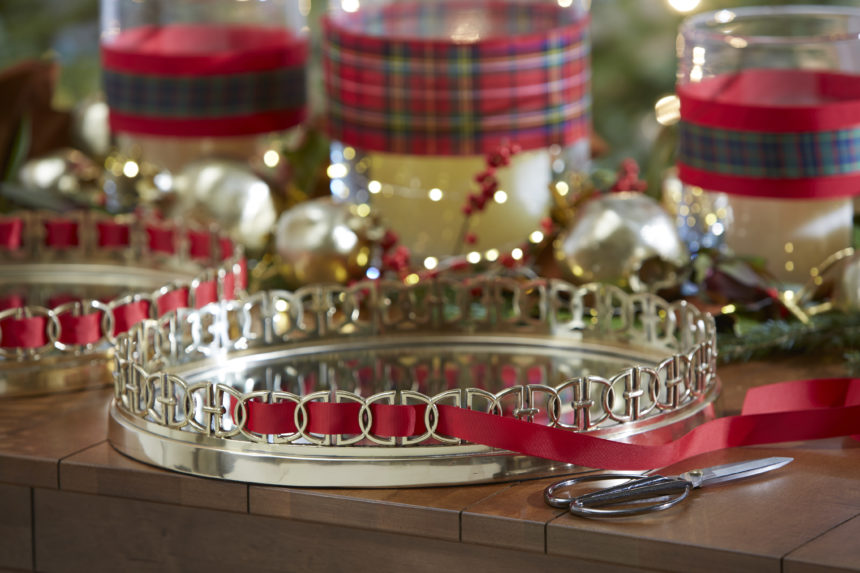

Our Oval Link tray is fab as is—perfect for displaying decorative objects, candles, flowers, or for serving up your favorite cocktail. We used narrow, red satin ribbon to add a pretty punch of color. Just weave your ribbon through the links, leaving about two inches to neatly fold over and secure with double-sided tape.
Take a peek at True Blue, our October magazine (download it here), and we promise you won’t feel blue in the least. Our designers captured some pretty cool blue moments—from the Baldwin settee on the cover (love the Greek key nailhead trim) to our sumptuous Monikka bedding (p. 22—be still our hearts!). Blue is widely considered the world’s favorite color (go on, Google it), and we know that in home décor, blues of every stripe just never seem to go out of style. Join the navy? We’re in. Reach for the sky? We’re up for it. Take a powder? We love all the baby blues. In fairness to fall, we can appreciate its fiery reds and glorious golds, but give us any hue of blue—in any season—and we’re down.
Here are some of our favorite looks!







Summer is officially over. It’s time to close the pool, rake the leaves, plant the bulbs … but whatever you do, don’t call off the outdoor entertaining—not yet.
Even if you live in a region with four distinct seasons, there’s still time to get out and grill, chill, sip, and nosh, while hosting friends and family in style. Fall entertaining is all about creating a cozy vibe. Bring on the harvest hues and amp up the creature comforts. Swap the beach towels for toasty blankets and throws. Let there be light: Bring out the candles and lanterns, and build a fire. Think hot cocoa instead of cold brews.
And because you never know when a chill will chase the party indoors, remember to eat dessert first—especially s’mores, everyone’s fireside favorite. Our colleague Marta Eriquez was kind enough to share her recipe for indoor s’mores with a deliciously gooey twist. The best part: You can make them all year long (no fire or charred marshmallows required).
MARTA’S S’MORES BARK
Ingredients
Instructions
Bark can be stored in an airtight container in the refrigerator—if you have any left over!
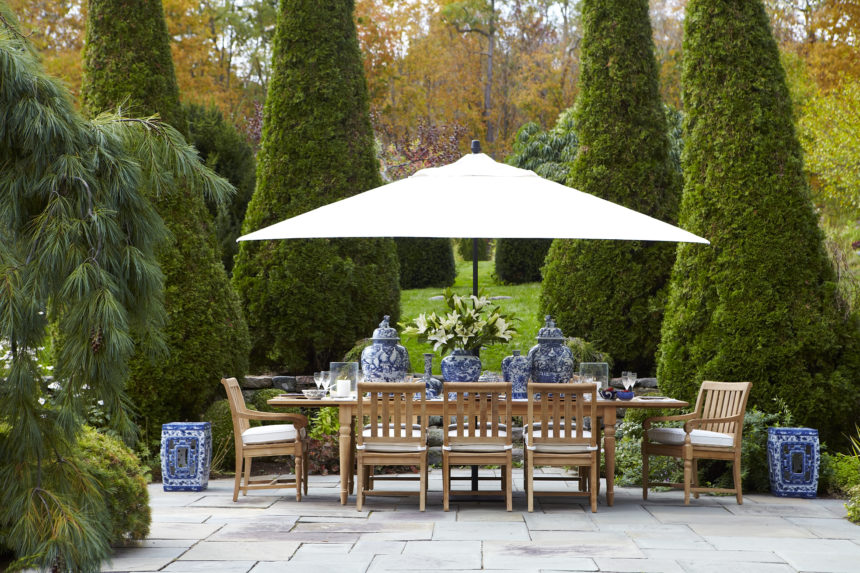







We’re so in love with these pressed botanicals, we decided to repost this again for everyone to enjoy!
Julie Franklin’s classic botanicals are naturally lovely. Natural, because they’re made from genuine sprigs, leaves, and stems—and lovely, because the artist chooses the delicate specimens carefully, then preserves and presses them herself.
Julie started gathering flowers and leaves in her native Georgia with her cousin, a botanist who collected specimens for research, and soon learned how to preserve her pretty finds. First, she places a fresh botanical specimen between leaves of paper in an old-fashioned wood press, then hand-tightens the press as the specimen dries. When the press is opened, it often reveals exaggerated curves and colors—unexpected beauty captured in two dimensions.
We frame Julie’s botanicals in our New Jersey workshop—as befit these distinctive works of art. Our artisans mount a pressed specimen onto deckle-edge archival paper, along with an identifying card, and float it in a solid wood frame with an aged gold fillet, under museum-quality UV glass. Our botanical collections include 26 unique specimens set against a white background, and 12 set against black. Hang them alone, in pairs, or in groups to create a stunning gallery wall.






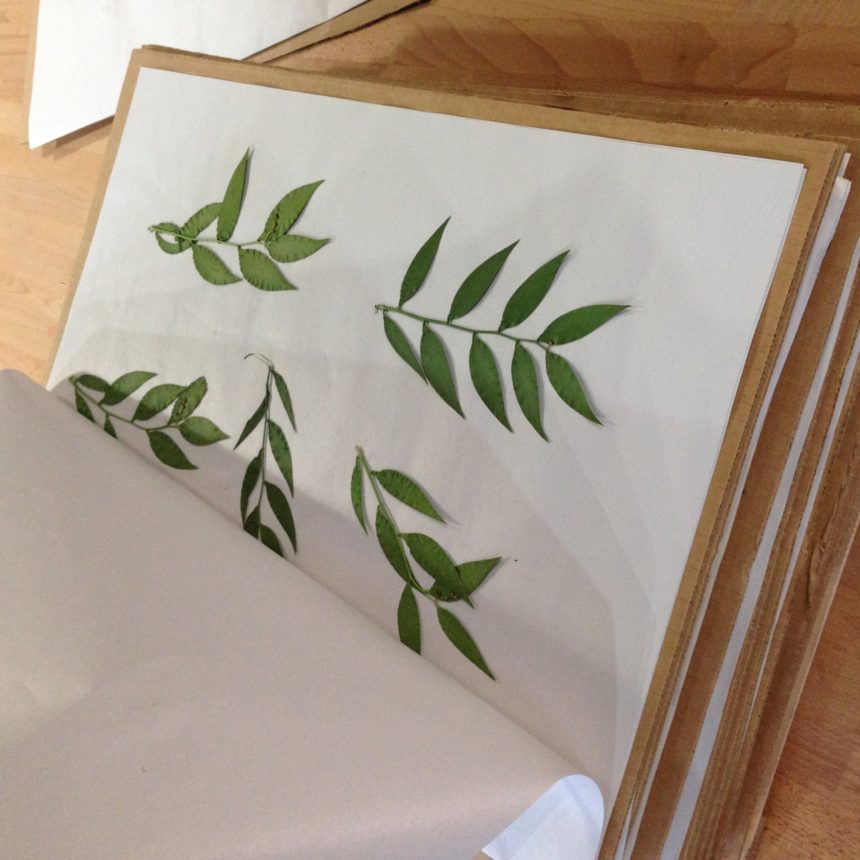

The ancient art of block printing has been around for 2,000 years. As a traditional method of textile design, it’s held up surprisingly well. Block printing is essentially the transfer of an image or design (in this case, coral) to a surface (a soft, white linen-and-cotton blend fabric) from a carved material (rubber, although wood is widely used) covered in ink (ours is water-based and nontoxic).

PRINTING OUR PILLOW, STEP BY STEP
An artist starts by carving the coral design into a piece of rubber to create a stamp that can be used again and again. The stamp is then glued to a piece of plexiglass, and ink is rolled out onto the raised stamp, ensuring the pigment is applied evenly. The pillow face fabric is placed on a padded surface, and the plexiglass is then turned over and positioned onto the fabric, inked side down. Pressure is evenly applied to the back of the plexiglass. While the fabric is held down, the plexiglass is then cleanly lifted away. The fabric is hung to dry before being sewn into the finished pillow.
Our Fan Coral Pillow is a contemporary example of the time-honored technique that’s widely associated with India, China, and Japan. The beauty and fine details of the natural sea fan coral are printed by hand onto cloth to produce an original, strikingly modern design—done the old-fashioned way. Our gorgeous block-printed pillows are made close to home, in a workshop in downtown Chicago. Each print is inked by hand, so variations will occur—only adding to the natural beauty of the piece.

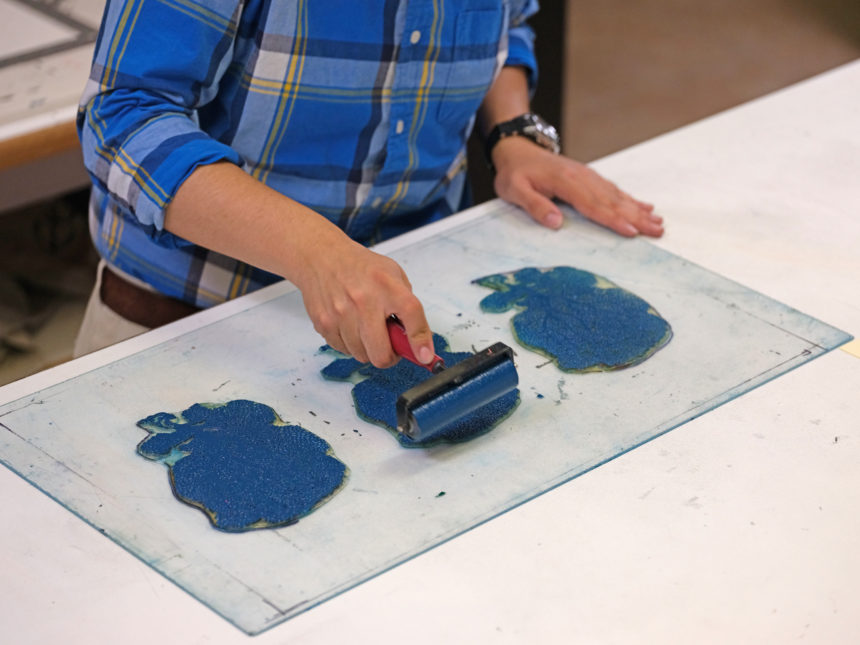


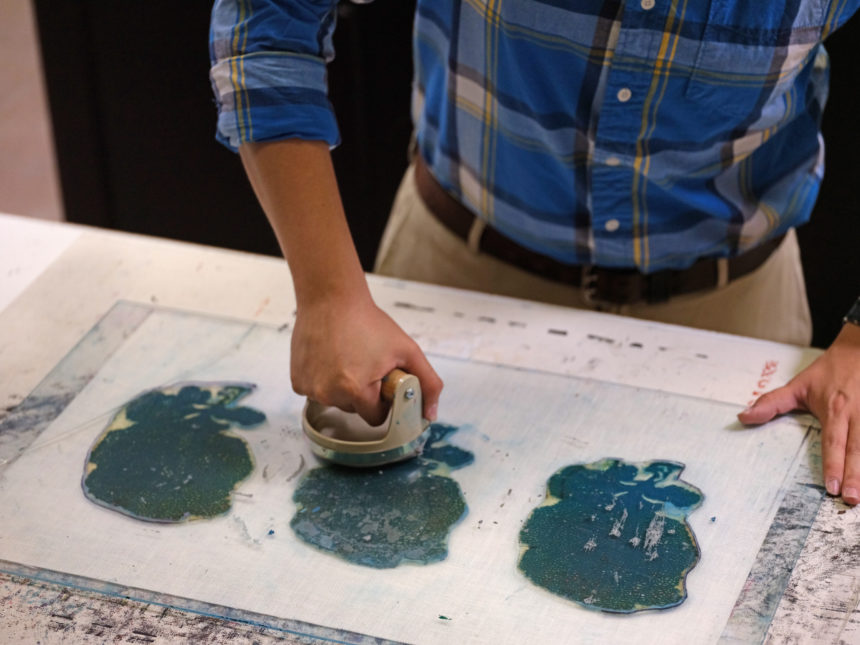

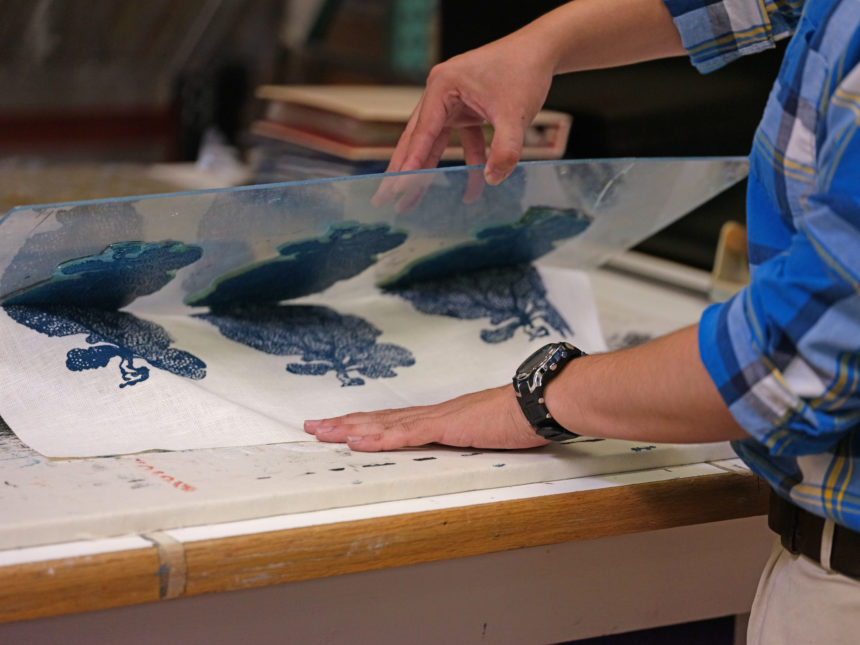


There’s a science to symmetry, and a host of reasons why we humans like it so much. It’s a design principle that has guided artists and architects for millennia. Symmetry is what happens when the elements on both sides of an axis are the same. It’s restful. It creates balance. And balance creates harmony. Too much symmetry can feel forced or fussy, but when it’s done well, it’s both visually agreeable and subliminally soothing.
Alicia Zupan knows this instinctively, which is why she does symmetry better than most. And that’s one of the reasons Alicia, a member of the Ethan Allen design team in Oklahoma City since 2012, is our latest Design Star.
For many designers like Alicia, symmetry is a go-to tool that never disappoints. “Symmetry is found in nature through reflection, repetition, and rotation,” explains Alicia. “and I use all three in many of my projects.” But while symmetry creates balance, it’s not the only path to harmony. “I also use asymmetrical pieces to create balance,” she says, “but they must be chosen well. It’s important they are of same scale or visual weight to create a feeling of equilibrium.”
This is how Alicia does it:
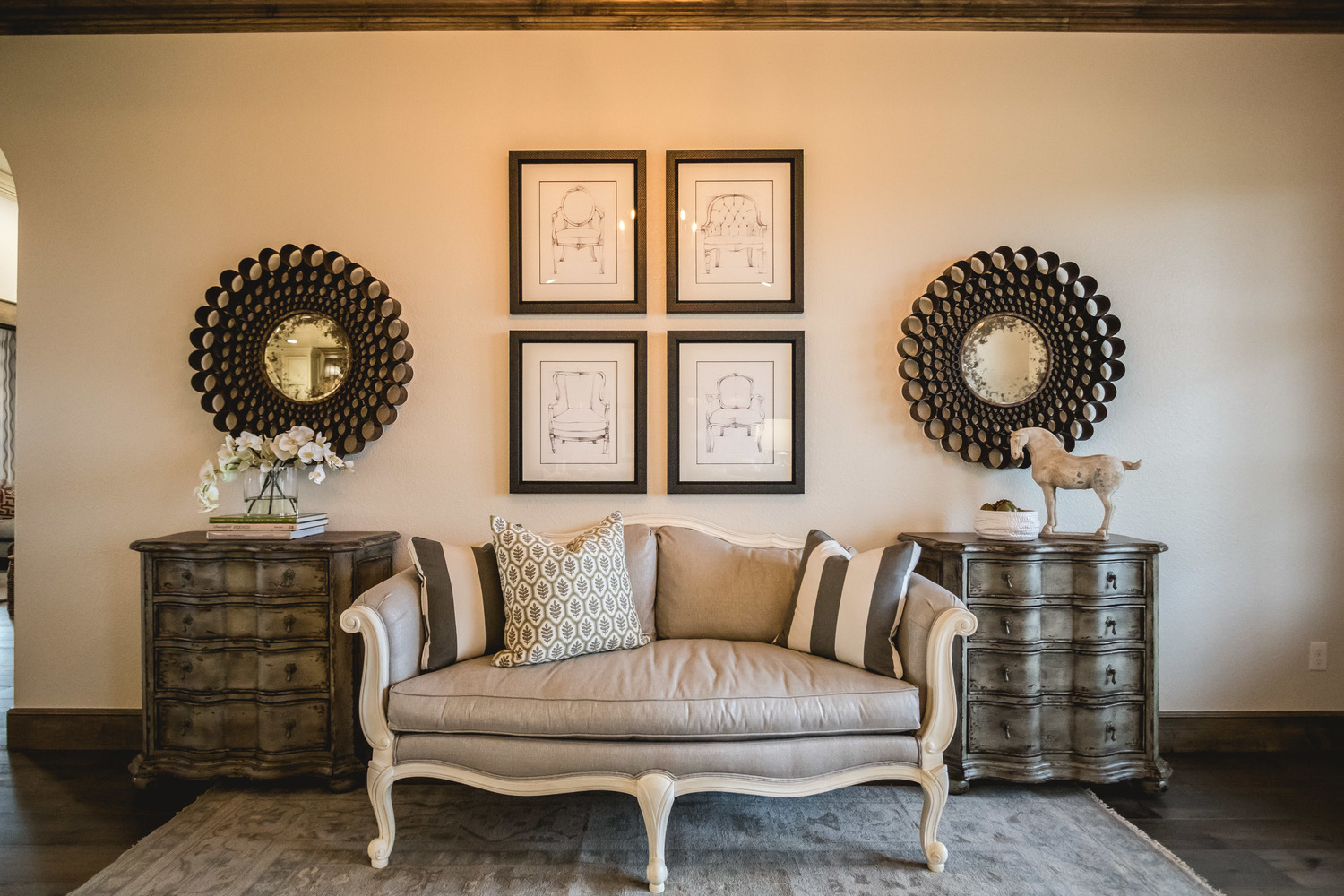
AZ: “This entry wall was large, open to the living and dining rooms, so it needed a statement that said, ‘Welcome, come have a seat!’ To create that, I used mirroring Lucca chests and aged bronze industrial mirrors on either side of the Evette settee, the focal point of the space. The repetitive use of artwork above the settee is called translational symmetry. To add interest and break up the uniformity, I added asymmetry in the form of tabletop accents and a patterned pillow.”

AZ: “This is one of my favorite bathrooms. There’s lots of symmetry here. We wanted the freestanding bathtub to be the focal point of the room. The two Quatrefoil mirrors over the matching vanities established support and structure for the focal point. Custom sheers and the Alexa chandelier created an element of romance; a small bench and Belle table deliver function and interest.”

AZ: “Two matching Rand chairs flanking the fireplace and twin Jocelyn coffee tables create powerful symmetry in this room. The Mansfield and Oxford sofas are similar in scale, so they add balance. The use of different fabrics and accents brings in asymmetrical notes.”
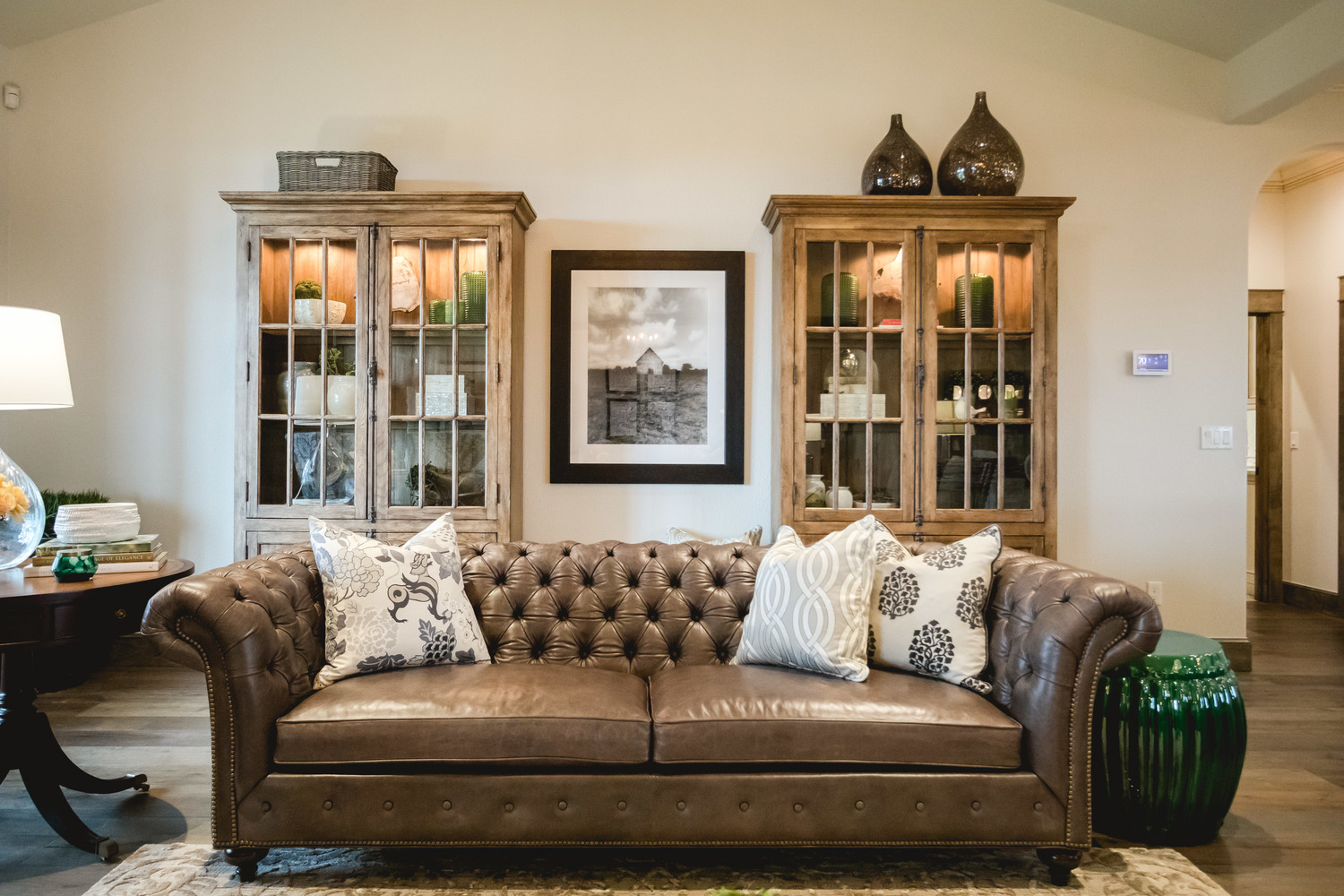
AZ: “The statement-making cabinets behind the Mansfield sofa anchor this space with pure symmetry. I balanced out the visual weight of the Bradford Rent table and clear glass lamp with the Emerald drum table on the other side of the sofa. The simple basket and Aubergine Plum vases are very different, but nevertheless add equilibrium.”
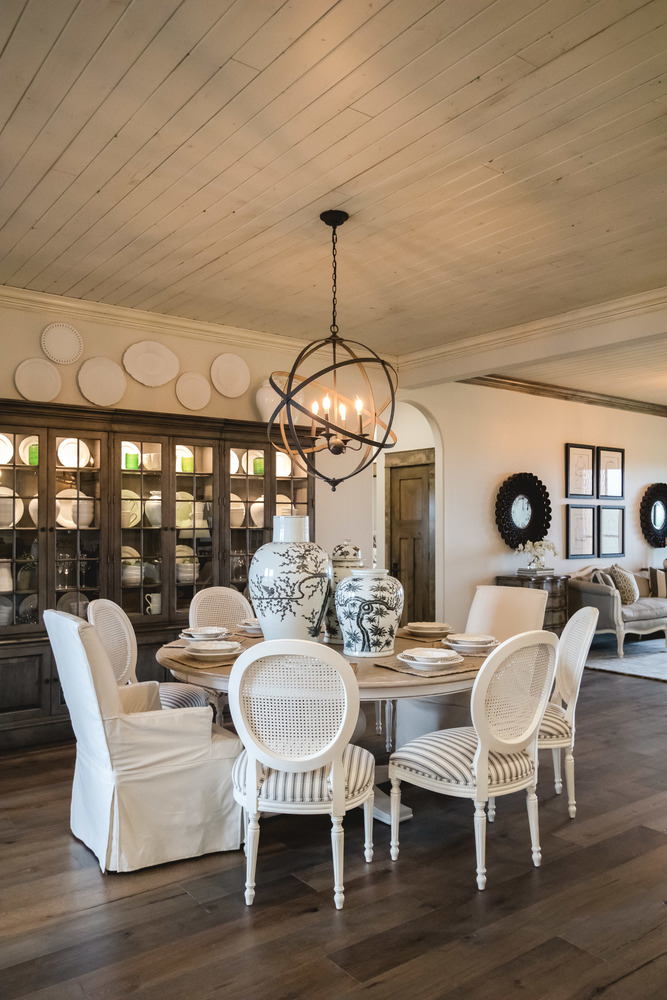
AZ: “Here I used ‘radial symmetry’ in the way I positioned the Chrystiane and Dayton chairs around the Cooper table, which is the central axis in the room, along with the Navesink chandelier overhead.”
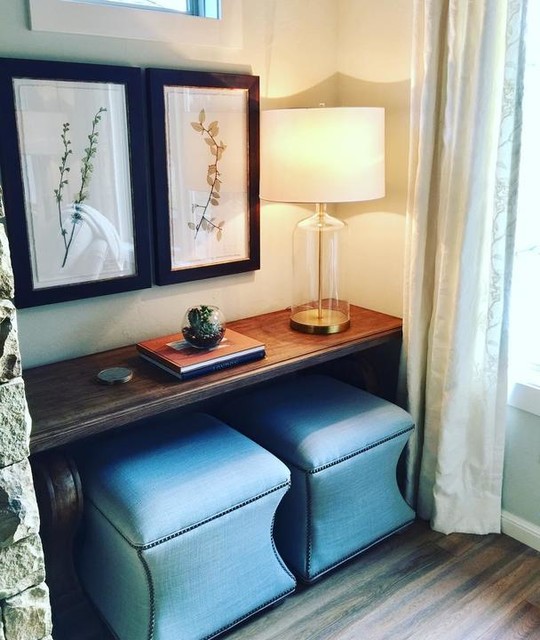
AZ: “I love using pairs to create symmetry in a vignette. Here I hung a pair of pressed botanicals over the Wayfarer console and tucked a pair of Corbin ottomans underneath.”
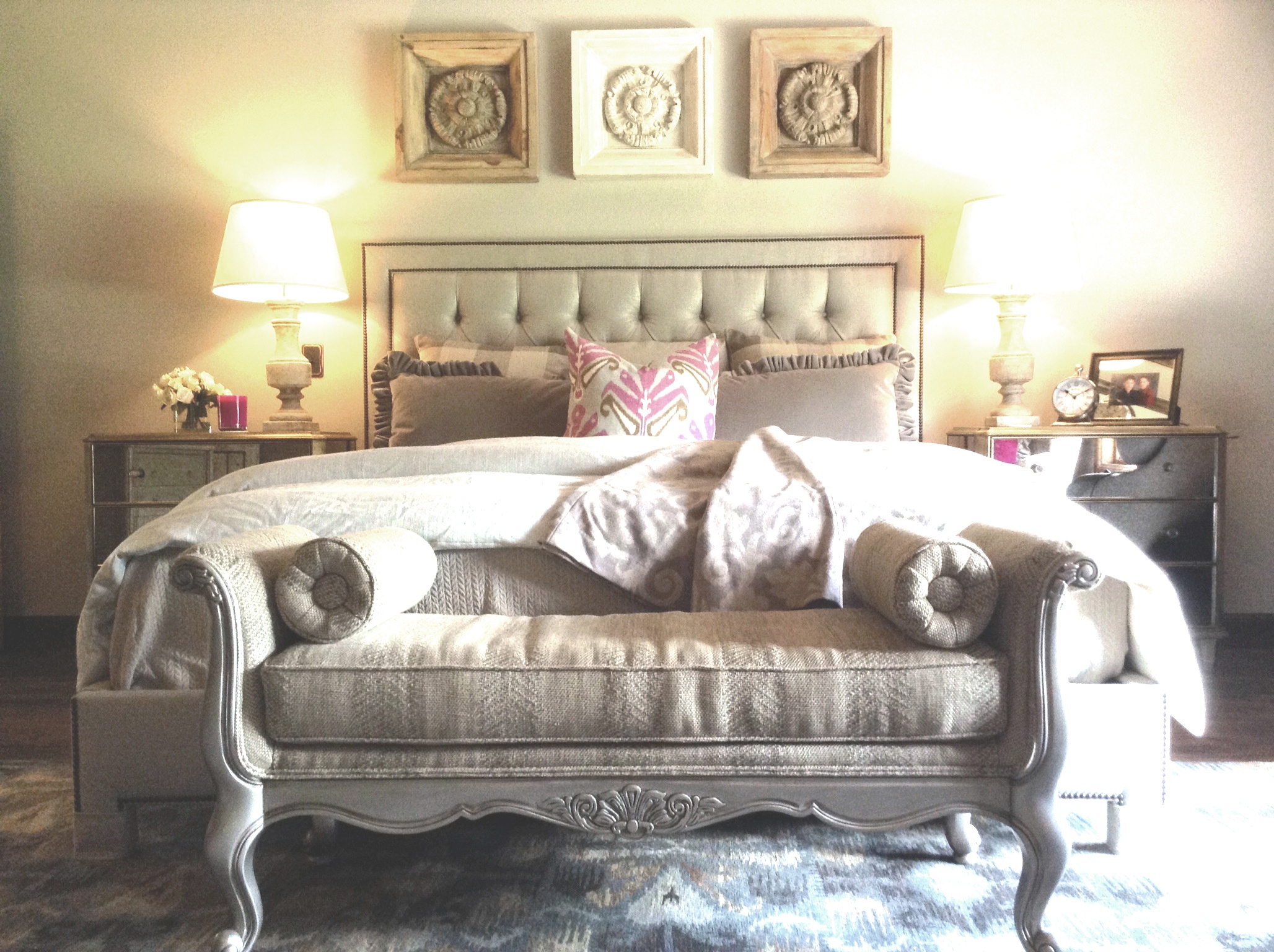
AZ: “Two Vivica chests and matching lamps on each side of the Jensen bed create balance and serenity. The graceful Belfiore bench softens the lines of the headboard and repeats the rosette motif of the artwork above the bed.”
When John met clients Shelly and Gil, it was love at first design. See how Shelly got the romantic bedroom she’d always dreamed of (Gil likes it, too!).
